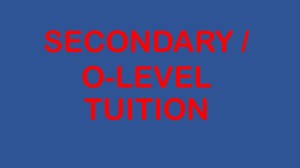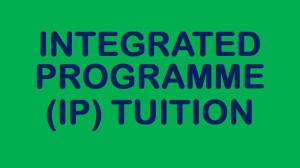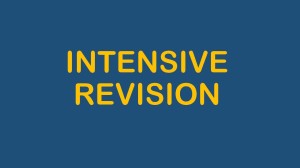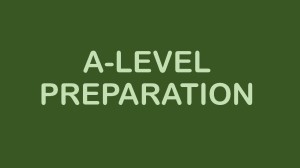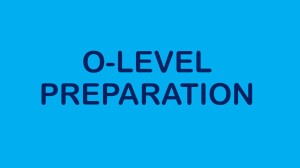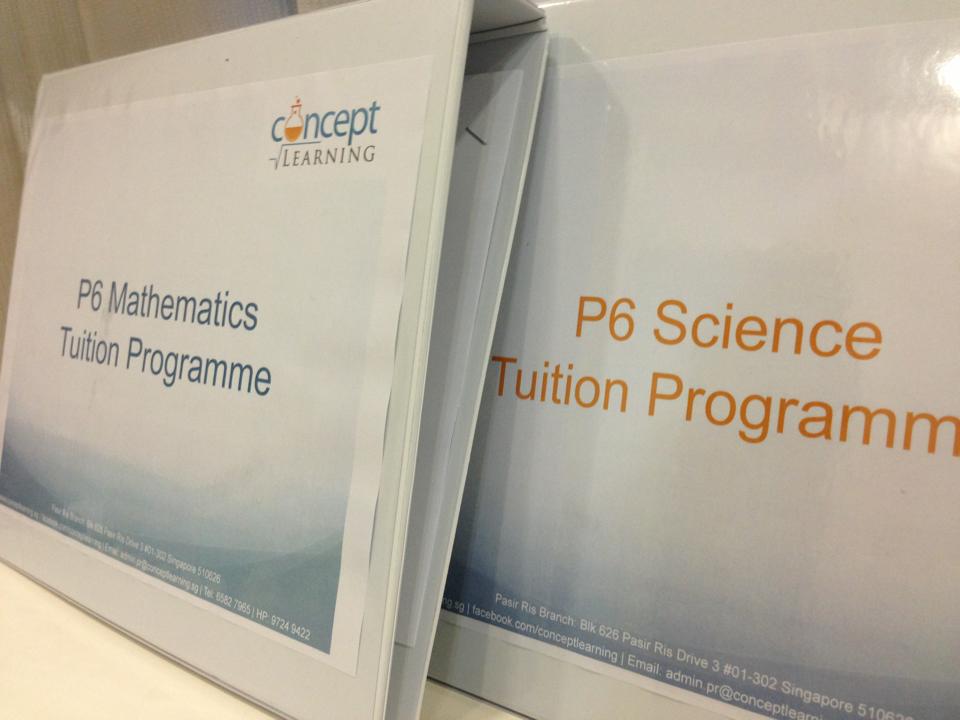For our latest timetable, click here => 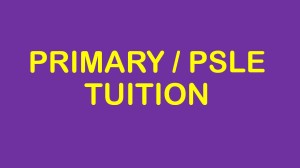
===============================================================
ORIGINAL POST(OUTDATED):
After conducting the PSLE Math Intensive Revision workshop during the recent March holidays, where I taught a wonderful group of students some of the more difficult concepts found in PSLE Math as well as metacognitive approaches to problem solving, some parents have asked me to continue conducting a weekly challenging PSLE math programme, as the next PSLE Math Intensive Revision in June is too far away.
For this challenging math program, I will be teaching students the more difficult concepts necessary to excel in PSLE Math, as well as the strategies and heuristics commonly employed to solve them. I will also be exposing students to P6 Math Olympiad questions as some of the most difficult PSLE Math questions are modified Primary Math Olympiad questions. Details of the weekly programme are as follows:
Level/Subject: PSLE Challenging Math
Day/Time: Every Saturday, 9.00 am to 10.30 am ( 1.5 hrs)
Location: Blk 627 Bukit Batok Central #07-640
Focus: Difficult Concepts, Strategies, Heuristics, Olympiad
Fees: $150 for every four sessions.
Class Size: 2 to 8 students.
Tutor: Mr Ilyasa; M.Ed (NIE), PGDE (NIE), BSc (NUS), Ex-RI/RJC; ex-sch teacher, full-time tutor of PSLE, O and A Level Math and Physics. (h/p: 97860411)
A former secondary school Physics teacher, Mr Ilyasa has been coaching students in ‘A’ Level (H2/H1) Physics and (H2/H1) Mathematics for more than 7 years, as well as ‘O’ Level Physics, Additional Math, Math and PSLE Math for more than 10 years. An alumnus of RI and RJC, Mr Ilyasa holds a Bachelor of Science degree with Merit from the National University of Singapore, a Postgraduate Diploma in Education with Credit from the National Institute of Education, Singapore, and a Master of Education (Curriculum & Teaching) degree also from the NIE, Singapore.
To register, kindly call or send an sms to 97860411.
New PSLE / P6 Math class every Thursday 5.45 to 7.15pm
For our latest timetable, click here => 
===============================================================
ORIGINAL POST(OUTDATED):
Level/Subject: PSLE / P6 Math
Day/Time: Every Thursday, 5.45pm to 7.15pm
Location: Blk 627, Bt Batok Central
Focus: Metacognitive learning and problem-solving using Concept Learning’s worksheets plus additional materials.
Fee: $120 per month (To Register, call or sms to 97860411)
Tutor: Mr Ilyasa
A former MOE school teacher, Mr Ilyasa has been coaching students in ‘A’ Level (H2/H1) Physics and (H2/H1) Mathematics for more than 7 years, as well as ‘O’ Level Physics, Additional Math, Math and PSLE Math for more than 10 years. An alumnus of RI and RJC, Mr Ilyasa holds a Bachelor of Science degree with Merit from the National University of Singapore, a Postgraduate Diploma in Education with Credit from the National Institute of Education, Singapore, and a Master of Education (Curriculum & Teaching) degree also from the NIE, Singapore.
Interested in PSLE Math & Science Intensive Revision during Mar and June holidays? Click here.
“Models (drawing of) destroyed my life.” – Sec 3 Math student
I laughed when he said it. But it’s a significant statement by my Sec 3 Math student made two days ago. It’s something I’ve been warning parents and students about, in my earlier article Beware the Critical Years in Math.
This Sec 3 Math tutee is from a top government secondary school in the west. Being mathematically intelligent, he had found it easy to use models-drawing to solve PSLE Math problems. But he had a hard time coping with Algebra in Sec 1 and Sec 2, and it’s affecting both his Math and A. Math performance now. This situation is not unique to him.
The best years of learning by your brain is probably from the time you were born to just before your teenagehood. Singaporeans around my age or older were taught to use algebraic equations to solve math problems at the PSLE back then. I remember using simultaneous equations in 1984 to solve today’s “guess & check” problems in the PSLE. Thus our algebraic skills were good and it helped us, even those who didn’t do well at the PSLE, in doing O-Level and A-Level Math.
Algebra is SO important for Math at O-level and A-level, yet our dear MOE chooses not to introduce it for problem-solving in today’s PSLE. I still don’t understand why.
It is true that some young students may not be able to understand Algebra, due to it being very abstract. But it is also true that some young students are not visually or spatially intelligent enough to draw, cut and move rectangles to solve problems. For eg, what has rectangles got to do with mass or age? (you know, those problems involving age relationships between persons or mass relationships between objects). Using rectangles or boxes to represent age or mass is just as ridiculous or abstract as using letters such as ‘x’ and ‘y’ as in algebra.
The least the MOE should do is to allow the teaching of BOTH methods to solve problems. Since those boxes start appearing in P2 or P3, algebraic expressions should also be introduced at P2 or P3, algebraic expansion in P4, algebraic factorisation in P5, and algebraic equations in P6. Sec 1 students can straightaway start on algebraic fractions etc. Do we lose anything by introducing algebra earlier in our math curriculum?
I’m glad I started my Sec 1 Algebra course for post-PSLE students in Nov and Dec last year (see Sec 1 Algebra Headstart Holiday Enrichment Programme for post-PSLE students). I think students still don’t realise how ill-prepared they are for math in sec school and JC. I dare say that if you are weak in your S1 and S2 algebra, you don’t have to take Math anymore.
Good Luck.
Rgds,
Ilyasa
(M.Ed., PGDE, B.Sc, ex-teacher, full-time tutor: 97860411)
_______________________________________
TUITION CLASSES:
_______________________________________________________________
EDUCATIONAL SERVICES:
______________________________________________________________
By EX-MOE TEACHERS & EXPERIENCED TUTORS
@ BLK 644, BUKIT BATOK CENTRAL, #01-68. S(650644).
CALL 65694897 OR SMS 98530744 OR 97860411.
P6 (PSLE) Math & Science Tuition at Concept Learning
_______________________________________
TUITION CLASSES:
_______________________________________________________________
EDUCATIONAL SERVICES:
______________________________________________________________
By EX-MOE TEACHERS & EXPERIENCED TUTORS
@ BLK 644, BUKIT BATOK CENTRAL, #01-68. S(650644).
CALL 65694897 OR SMS 98530744 OR 97860411.
For more details, kindly visit www.conceptlearning.sg, or call 97860411.
Teaching Math to kids everyday ….
I believe the human brain has a math processor that needs to be activated and nurtured regularly. Again, parents play an important role in making a child comfortable with numbers and calculations. The following are some concepts in daily life that deal with math:
(1) Time: Parents can ask children to add hours and mins to the current time to arrive at a specific time for some activity. Alternatively, give the child a time problem that he needs to solve by working backwards. For example, “if we want to reach the shopping mall at 5:15pm and we take 40 mins to get there, at what time should we leave the house?”
(2) Money: Counting money, calculating change (remainder), determining the price after discount, budgeting and calculating profit or loss are some of the mathematical activities that we may encounter daily or weekly.
(3) Shapes and figures: In toys, art and household furniture there are shapes and figures for children to think about. How about the area and perimeter of such shapes? How about the volumes of some 3-D figures? The concepts of proportion, similarity and congruency can also be discussed when observing shapes. For example, two dining table chairs are congruent. A baby elephant and a mother elephant are similar but not congruent.
(4) Lines and gradient: Look around us and we can see many parallel lines, intersecting lines and perpendicular lines. How about the slope (gradient) of a road outside the house? The steepness of a staircase?
(5) Distance and speed: What is speed? How is it determined? Observe walking speeds, cycling speeds and the speeds of vehicles. While taking a taxi, estimate its average speed and take note of the travelling time. Estimate how far the taxi travelled.
(6) Statistics: In the newspapers we can find pie charts and bar charts, and the terms “average” and “mean”. What do the charts show and what do these terms mean? Even young kids can interpret pie charts. Parents can relate pie charts to cutting a birthday cake.
There are many more examples of mathematics in daily life. When children understand cost price, selling price, revenue and profit, they are on their way to understanding business and the economy. Entrepreneurship can then develop from there.
Ilyasa, M.Ed, PGDE, B.Sc.
Is metacognition part of the mathematics curriculum in Singapore?
One of the aims of mathematics education in schools in Singapore is to enable students to acquire thinking and problem solving skills and to make effective use of these skills to formulate and solve problems (MOE, 2007).
The existing curriculum framework for mathematics designed by the Ministry of Education (MOE) lists metacognition as one of the components on which the development of mathematical problem solving ability depends.
According to the MOE (2007), metacognition can be defined as the realization of, and the ability to regulate one’s thinking processes, in particular the choosing and application of problem-solving strategies. The MOE believes that it is important to provide students with metacognitive experience in order to help them develop their problem solving abilities.
Note: The above paragraphs are adapted from my minor research paper, Examining Supports for Metacognition in Singaporean Lower Secondary Mathematics Textbooks, NIE, 2011. All rights reserved.
Related links:
(1) Metacognition – The secret to learning and problem-solving;
(2) Metacognition and problem-solving;
(3) Metacognition enhances learning;
_______________________________________
TUITION CLASSES:
_______________________________________________________________
EDUCATIONAL SERVICES:
______________________________________________________________
By EX-MOE TEACHERS & EXPERIENCED TUTORS
@ BLK 644, BUKIT BATOK CENTRAL, #01-68. S(650644).
CALL 65694897 OR SMS 98530744 OR 97860411.
Metacognition enhances learning
Various studies have revealed that metacognition helps to enrich students’ learning in different domains. For example, it has the potential to increase students’ capacities for independent learning (Ganz & Ganz, 1990).
Research also shows that knowledge of metacognition, such as being familiar with one’s strengths and weaknesses and searching for ways to overcome the latter, contributes to more effective learning (Bransford, Brown, & Cocking, 1999). Research also suggests that metacognition improves one’s chances of success when it comes to completing activities that rely heavily on thinking processes (Garner & Alexander, 1989; Pressley & Ghatala, 1990).
Many studies in metacognition have concluded that those who have advanced metacognitive abilities are more adaptable and steadfast in problem solving (e.g., see Artzt & Armour-Thomas, 1992; Swanson, 1990). Studies have also shown that one’s ability to plan and monitor a problem-solving process requires several metacognitive skills such as regulation and evaluation of thought processes (Mayer, 1999), and the use of metacognitive skills has the potential to identify the more able students from the less able ones (Pellegrino, Chudowsky & Glaser, 2001).
In addition, research has shown that one’s individual and group learning skills can be improved through the acquisition of metacognitive competencies (White & Frederiksen, 2005). Recent studies have also revealed that students who often fail to choose appropriate strategies, monitor or regulate their work, or articulate their thought processes are more likely to perform poorly in mathematics (e.g., see Lucangeli & Cabrele, 2006; Carlson & Bloom, 2005).
Note: The above paragraphs are adapted from my minor research paper, Examining Supports for Metacognition in Singaporean Lower Secondary Mathematics Textbooks, NIE, 2011. All rights reserved.
Related links:
(1) Metacognition – The secret to learning and problem-solving;
(2) Metacognition and problem-solving;
(3) Is Metacognition part of the Singapore Math curriculum?
_______________________________________
TUITION CLASSES:
_______________________________________________________________
EDUCATIONAL SERVICES:
______________________________________________________________
By EX-MOE TEACHERS & EXPERIENCED TUTORS
@ BLK 644, BUKIT BATOK CENTRAL, #01-68. S(650644).
CALL 65694897 OR SMS 98530744 OR 97860411.
Metacognition and mathematical problem solving
Metacognition is a crucial element in problem-solving, which is itself a key component in mathematics learning. To monitor and regulate one’s cognitive processes in problem-solving, Polya (1945) describes a four-step method: first, one has to comprehend the problem by sub-dividing it into more manageable parts and recognize any given data, conditions and variables to be found; second, one devises or selects a strategy to find the connections between the known data and the unknowns to be found; third, one executes the plan, scanning, regulating and examining each step; and, finally, after obtaining the solution, one evaluates the results which may involve re-visiting the previously taken steps.
Building on Polya’s work, Schoenfeld (1987) describes effective mathematical problem-solving as being contingent on how one uses four types of knowledge/skills: (1) resource knowledge, which is knowledge about one’s abilities and cognitive processes including knowledge of how to perform tasks or procedures; (2) heuristics, which are specific problem-solving methods or strategies; (3) regulatory processes, which includes the organisation and selection of resources and strategies; and (4) beliefs, which includes perceptions of and assumptions about mathematics (Gama, 2004).
Note: The above paragraphs are adapted from my minor research paper, Examining Supports for Metacognition in Singaporean Lower Secondary Mathematics Textbooks, NIE, 2011. All rights reserved.
Related links:
(1) Metacognition – The secret to learning and problem-solving;
(2) Metacognition enhances learning;
(3) Is Metacognition part of the Singapore Math curriculum?
_______________________________________
TUITION CLASSES:
_______________________________________________________________
EDUCATIONAL SERVICES:
______________________________________________________________
By EX-MOE TEACHERS & EXPERIENCED TUTORS
@ BLK 644, BUKIT BATOK CENTRAL, #01-68. S(650644).
CALL 65694897 OR SMS 98530744 OR 97860411.
Metacognition – The ‘secret’ to learning and problem-solving …
You don’t have to be ‘good in English but bad in Math’, or ‘good in Science but lousy in History or Literature’, or ‘good in Chinese but lousy in English’. It doesn’t have to be a one-or-the-other kind of thing. Every subject has its own way of learning and thinking about, but you can only discover it if you bring yourself one level up – think about the thinking itself, and think about how you learn. You can only learn how to learn if you think about learning. You can only learn how to think if you think about thinking.
Thinking about thinking has another name: metacognition, which formed the basis of my minor research work completed in 2011 at the NIE. A lot of research into metacognition centers around mathematical problem-solving, although metacognition can be applied equally well to other subjects. So for the purpose of illustration here, I will use math as the basis for our discussion about metacognition.
What is Metacognition?
In its simplest form, metacognition can be described as thinking about thinking (Wellman, 1985). Flavell (1976) has stated some examples of what constitutes metacognition:
I am engaging in metacognition if I notice that I am having more trouble learning A than B; if it strikes me that I should double-check C before accepting it as a fact; (…)if I become aware that I am not sure what the experimenter really wants me to do; if I sense I had better make a note of D because I may forget I; if I think to ask someone about E to see if I have it right. (p. 232).
The above sounds familiar, doesn’t it? Yes, you may have been practising metacognition sub-consciously, all your life, without realising it has a formal name, or without realising how important it is to learning and thinking.
Research in metacognition has examined various forms of cognitive processes by building on Flavell’s initial notion of metacognition as the monitoring, regulation and arrangement of thinking processes to achieve specified goals (Gama, 2004).
For example, Brown (1987) argues that metacognition consists of two components: knowledge of cognition, and regulation of cognition. The former involves being aware of one’s cognitive abilities through self-reflection while the latter pertains to mental activities such as monitoring and controlling one’s thinking processes in the course of learning or problem-solving. According to Brown, although these two types of metacognition are distinct from one another, they are usually used together in the same cognitive process as one type often utilises the service of the other (Gama, 2004).
Note: The above paragraphs are adapted from my minor research paper, Examining Supports for Metacognition in Singaporean Lower Secondary Mathematics Textbooks, NIE, 2011. All rights reserved.
Related links:
(1) Metacognition and problem-solving;
(2) Metacognition enhances learning;
(3) Is Metacognition part of the Singapore Math curriculum?
TUITION CLASSES:
_______________________________________________________________
EDUCATIONAL SERVICES:
______________________________________________________________
By EX-MOE TEACHERS & EXPERIENCED TUTORS
@ BLK 644, BUKIT BATOK CENTRAL, #01-68. S(650644).
CALL 65694897 OR SMS 98530744 OR 97860411.
Pri 3 to Pri 6 Math & Science Tuition at Bukit Batok Central
For our latest timetable, click here => 
=============================================================
ORIGINAL POST (OUTDATED):
The following subjects and levels are provided (each lesson is 1.5 hrs):
Pri 6 Math: Mon 4.00 pm – 5.30 pm, Wed 4.00 pm – 5.30 pm, Fri 4.00 pm – 5.30 pm
Pri 6 Science: Mon 5.45 pm – 7.15 pm, Wed 5.45 pm – 7.15 pm, Fri 5.45 pm – 7.15 pm
Pri 5 Math: Mon 4.00 pm – 5.30 pm, Wed 4.00 pm – 5.30 pm, Fri 4.00 pm – 5.30 pm
Pri 5 Science: Mon 5.45 pm – 7.15 pm, Wed 5.45 pm – 7.15 pm, Fri 5.45 pm – 7.15 pm
Pri 4 Math: Tue 4.00 pm – 5.30 pm, Thur 4.00 pm – 5.30 pm
Pri 4 Science: Tue 5.45 pm – 7.15 pm, Thur 5.45 pm – 7.15 pm
Pri 3 Math: Tue 4.00 pm – 5.30 pm, Thur 4.00 pm – 5.30 pm
Pri 3 Science: Tue 5.45 pm – 7.15 pm, Thur 5.45 pm – 7.15 pm
DETAILS:
Location: Blk 627 Bukit Batok Central #07-640
Tutor(s): Mr Jay Lim, Master of International Management, experienced full-time tutor.
Average Class Size: 3-6 students.
Fees Per Month:
Pri 5 or Pri 6: One subject, once a week: $100 per mth; One subject, twice a week: $160 per mth; Two subjects (3h), once a week: $160 per mth; Two subjects (3h), twice a week: $280 per mth; Two subjects, EVERY day (3h) Monday to Friday: $580 per mth.
Pri 3 or Pri 4: One subject, once a week: $80 per mth; One subject, twice a week: $140 per mth; Two subjects (3h), once a week: $140 per mth; Two subjects (3h), twice a week: $240 per mth; Two subjects, EVERY day (3h) Monday to Friday: $480 per mth.
Note: Lessons will begin on Dec 3 onwards.
For enquiries, call or sms to 97860411. To register, sms Student Name, Subject, Level and Day/Time to 97860411. Thank you.
Ilyasa


